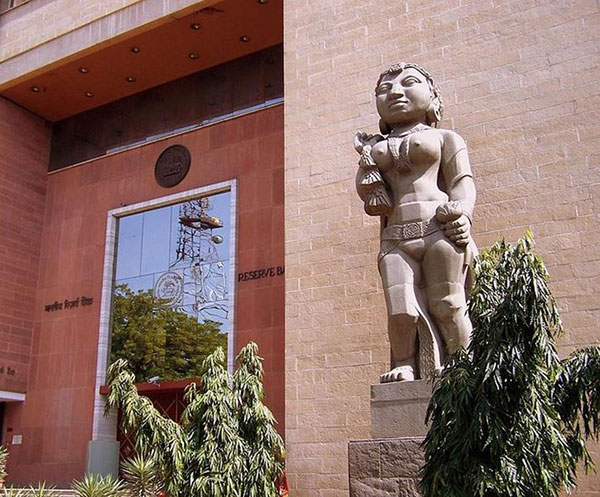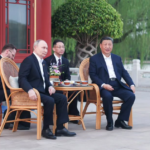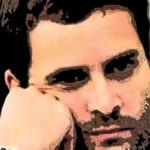IT was the best of times, it was the worst of times, it was the age of wisdom, it was the age of foolishness, it was the epoch of belief, it was the epoch of incredulity, it was the season of light, it was the season of darkness, it was the spring of hope, it was the winter of despair….” This part of the first line of A Tale of Two Cities by novelist Charles Dickens aptly captures the state of Indian business and economy in the past decade.
It was full of contradictions-good entangled with the bad, and growth and development coexisted with growing inequalities and developing devastation of the poor. Businesses made money, their debt accumulated and threatened to landslide their vast empires. Consumers shopped madly, even as the poor faced shortages and committed suicides. It was an era of jobless growth, it was an age that welcomed investors and cronyism, and it was a period that saw the rise of new entrepreneurs and fall of others.
Paradoxical beginnings
In 2007, or 10 years ago, we should have anticipated the coming decade of paradoxes, ambiguities and inconsistencies. For it was in that year, although the worst happened in the next, that the economists and policy makers began to whisper about the coming crash in the US real estate market, which would have unimaginable consequences on the global financial sector. The latter, in turn, could endanger all the economies in the world, be it developed, developing and under-developed ones, and across continents.
Needless to say, when the Financial Crisis of 2008 hit us, people talked about the Second Great Depression, or a future worse than the 1930s. Needless to say that is when we first noticed the beginnings of the Indian economy trick. Although economic growth dipped to below 4% in 2009, it hovered over 8% for the next few years, and even crossed 11% in one of them. This was when most global economies tottered, crashed, and went into paralysis.
No one knew what happened. The popular theory was that India, which had become part of the global village since 1991, was shielded by external cataclysms. This was because her financial sector was closely monitored by the RBI, and never overleveraged itself. The banks and financial institutions were cautious, conservative and safe-one indicator was their minimal or zero exposures to derivatives, which were the main cause for the Second Depression and the failures of leading global financial giants.
As Indian regulators, bankers and policy makers exuberantly patted each other on their backs and shoulders, the economy faltered in 2013. Yet again, no one knew what happened. Four years later, it is yet to fully recover; demonetisation further impacted a quick upturn, which was anticipated when a new regime came to power in 2014. Lo and behold! Indians still patted each other-after all, we were the fastest-growing among big economies.
Case of twin balance sheets
AS the Indian economy faltered and sputtered, but grew at “world-beating pace”, guess which was the worst affected sector? The finance and banking sector, which was considered to be shielded against external influences, was rocked by internal corporate turbulence. Since 2010, the bad loans or non-performing assets (NPAs) of the public sector banks have zoomed. In 2016, they were compelled to write them off, which ripped apart their balance sheets. The tide portends to turn into a tsunami.
Within the corporate sector, the situation is grim. According to Credit Suisse, over 40 per cent of the corporate debt is owed by firms that didn’t earn enough to pay interest, let alone the original capital. As the latest Economic Survey stated, it was clear that “India was suffering from a ‘twin balance sheet problem’, where both the banking and corporate sectors were under stress.” It added that India’s NPAs were higher than any other emerging market, except Russia, and higher than the levels seen during the East Asian crisis.
As Indian regulators, bankers and policy makers exuberantly patted each other on their backs and shoulders, the economy faltered in 2013. Yet again, no one knew what happened. Four years later, it is yet to fully recover
Normally, this situation develops from a common path. During boom periods, the corporate sector borrows heavily to finance expansion and diversification. Then glitches in a sector or a few sectors force it to default, which hurts the banking sector. The combination impacts the overall growth-companies that can’t pay off their debts don’t invest, and those which can, cannot invest because the troubled banks are unable to lend.
In India’s case, there were similarities and huge differences. The early 2000s witnessed a boom, but, as said earlier, India remained largely unscathed after the 2008 global crisis. This, said experts, indicated the prudent norms within the banking sector, which prevented excessive lending. If this was true, then why did the NPAs jump? If this wasn’t true, and India followed the classical route, then why is the impact so minor? For example, there have no runs on the banks, and no effect on interbank rates.
More importantly, although growth is down from 8-10 per cent to 6-7 per cent, the economy seems to be getting along without major pressure points. In recent global cases, the twin balance sheet syndrome decimated economies in East Asia in 1997 and led to a huge depression in the UK and the US in 2008-09. Banks incurred losses, but their broader balance sheets remained intact. Companies suffered losses in some sectors, but overall growth didn’t peter out.
Rise of new entrepreneurs
THE sectors, which performed well, despite the problems with corporate debt, threw up several surprises. A few weeks ago, a little-known brick-and-mortar retailer, Radhakishan Damani, was valued at $5.5 billion, and crashed into the Top 20 List of Wealthiest Indians. A former broker, who was the mentor of India’s Warren Buffet, Rakesh Jhunjhunwala, the shares of his company, which owns DMart stores, were valued at Rs 17 each in September 2016.
Twenty-two months later, he sold the same shares for Rs 299 each; when they were listed on the Indian stock exchanges, they closed at over Rs 600 on the first day. Instantly, Damani and his family became multi-billionaires. They became richer than the well-known businessmen like Anil Ambani and Subhash Chandra. Even many of the new digital entrepreneurs, like the founders of Ola, are poorer. To put it in perspective, the Damani family’s wealth is just a fifth of the India’s richest man, Mukesh Ambani.
By the 1990s, the traditional Indian business families-Dalmias, Modis and Bajajs were on the vane. Newer ones, like Ambani and Ruia, had become wealthier. The latter were generally first-generation entrepreneurs, with no or little business experience. By the later 1990s, the Top 20 List included IT (information technology) business persons like Azim Premji and Shiv Nadar. These were then joined by the new crop of digital billionaires.
Over the past decade, the changes were faster; faces were replaced quickly and quietly by new ones. Of the Top 20 names in 2007, as per the Forbes list, eight weren’t present in the 2017. These included formidable names such as Anil Ambani, Kushal Pal Singh (DLF), Anil Agarwal (Vedanta), Tulsi Tanti (wind energy), Grandhi Rao (GMR Group) and Anand Jain (Mukesh Ambani’s right hand man). They were replaced by an assorted lot-Hinduja family, Pallonji Mistry, Subhash Chandra, and the rejuvenated Rahul Bajaj.
Resource curse and cronyism
The recurring story, as if there was a never-ending curse on it, of this century in the country is an extreme and offensive form of resource curse coupled with cronyism. From spectrum, minerals and metals, coal to oil and gas, several industrialists have become rich overnight, thanks to discretionary favours doled out by the government. These, as it later turned out, helped the businesses by billions of dollars, and resulted in similar official losses.
It’s a story that reappears and persists across the globe. From Latin America to Africa, Central Asia to South Asia, nations that were blessed with huge natural resources ended up in the worst kind of Dante’s hell. The countries were wracked with the worst form of corruption, and led by powerful leaders who became dictators or left no stone unturned to appropriate powers. As a few individuals and businesses squandered wealth, the people suffered. Experts and economists dubbed it as the ‘resource curse’.

Despite her democracy, and powerful supporting institutions, India became a willing victim of the same curse. As the new-found resources were sold out to private entrepreneurs, they became indigenous oligarchs-much like the Russian ones-and cheaply appropriated the limited resources. The government played along and propounded the logic that the aim was to benefit the consumers in the form of cheaper services.
When the media, civil society and judiciary revealed the full extent of the scandals-with unending zeroes-it angered the people. The voters showed their wrath by voting out the government in 2014 and bringing in a new leader who claimed to clean up the system. After almost three years, it seems that only the rules of transparency and corruption have changed. The old corrupt were booted out, and new ones took the places.
Jobless growth
As the economy, businesses and businesspersons changed, what happened to the common people-both the poor and middle class? Their lives worsened; the worst was their inability to get jobs. It seemed that India’s growth was jobless for the past 10-15 years. Even years of double-digit figures didn’t make much difference. Experts feel the reason is the lack of skills in general, and lack of specific, globally-required jobs. This explains this regime’s focus on skill development, and huge expenditure on this front.
However, this needs to be monitored carefully. In the 1960s, education was viewed to be the real gap. Within decades, there came a time when India had graduates, post-graduates, and PhDs, but no jobs, or satisfying ones. Then came the furious growth in technical courses-engineering, medicine, law and, later, software. In no time, the lack of skills was exposed. Today, only 40 per cent of engineers are employed; the figure is lower for software.
THE same can happen in the case of the skills that are now being imparted through government schemes. The popular thinking is that new skill should enable a person to become self-employed. Or, there should be initiatives to let people become entrepreneurs with their start-ups. What is normally forgotten are the really high failure rates in such ventures! Imagine an India 20 years from now, which is full of failed, but skilled, individuals.
In such a situation, civil rebellion and civil strife is a definite possibility. In the 1970s, JP led a huge protest by students and middle class, who were bothered by, among other things, lack of quality jobs. In the 1990s, the Mandal agitation and the Ram Temple movement highlighted the employment gaps, which forced new discussions and debates in the country. In some ways, the voters’ agitation and reaction in 2014 was related to jobs and earnings. The country’s politicians and economists will do well to remember this.
Alam Srinivas is a business journalist with almost four decades of experience and has written for the Times of India, bbc.com, India Today, Outlook, and San Jose Mercury News. He has written Storms in the Sea Wind, IPL and Inside Story, Women of Vision (Nine Business Leaders in Conversation with Alam Srinivas),Cricket Czars: Two Men Who Changed the Gentleman's Game, The Indian Consumer: One Billion Myths, One Billion Realities . He can be reached at editor@gfilesindia.com




























































